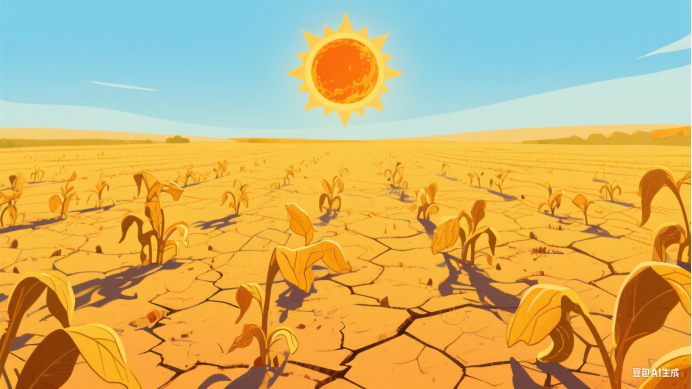
Even with farmers working hard to adapt to climate change, rising global temperatures could still lead to serious drops in the world’s most important food crops. A study published in the journal Nature shows that by the end of this century, for every degree the Earth warms, the amount of food available per person each day could fall by about 121 calories. If the planet warms by 3 degrees — which is possible if current trends continue — this loss would be like everyone skipping breakfast every day.
Scientists studied six major food crops: corn, soybeans, rice, wheat, cassava, and sorghum. Together, these provide over two-thirds of the calories people eat worldwide. The researchers collected a huge amount of data on crop yields and local weather patterns from 54 countries and regions. This information helped them understand how crops might respond to future climate changes and how farmers could adapt.
By looking at past data, the team learned how farmers have adjusted to changing conditions. They measured how actions like planting different crop types, using more water for irrigation, or adding extra fertilizer might reduce losses. They found that heat harms most crops, except rice, which actually grows better with warmer nights. Corn production, for example, is expected to fall by 12% to 28% by 2100 compared to a world without global warming, depending on future greenhouse gas levels.
The amount of loss depends greatly on whether farmers take steps to adapt. Without adaptation, losses could be one-third higher under severe warming. However, even with farmers’ best efforts, these actions are unlikely to fully make up for the large crop losses caused by climate change. One researcher questioned whether famous farming areas like the U.S. Corn Belt could survive in a much warmer world.
Interestingly, the study predicts the worst losses won’t happen in poorer countries, but in richer “breadbasket” regions such as the U.S. Midwest and Europe, which currently produce large amounts of food. Experts agree that while uncertainties remain about the future climate and the global food system, understanding how farmers adapt can help us prepare better. This worldwide view offers important clues for protecting our food supply in a changing world.
原创编写 版权所有 侵权必究! 每日更新 个性化阅读 英语飙升!
2. 2. What do we know about rice from the study?
A It needs less fertilizer.
B It benefits from warm nights.
C It resists heat poorly.
D It will replace corn by 2100.
4. 4. What is the study’s main value?
A Proving rich countries’ failure.
B Blaming greenhouse gases.
C Guiding food supply protection.
D Questioning farm adaptation.


 更多优质学习内容
更多优质学习内容

